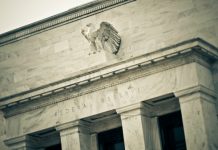As widely expected RBA left all the monetary policy measures unchanged in December. While acknowledging the “better-than-expected” economic recovery, the members reiterated that the outlook remains dependent on policy support.
On economic developments, the central bank noted that “the economic recovery is under way and recent data have generally been better than expected”. However, it added that “the recovery is still expected to be uneven and drawn out and it remains dependent on significant policy support”. Policymakers acknowledged that “employment growth was again strong in October” Yet, the continued to expect “a further rise in the unemployment rate” as “businesses restructure in response to the pandemic and more people rejoin the workforce”.
In November, RBA lowered the cash rate to 0.1% in November, from 0.25% previously. The target for the yield on the 3-year government bond yield and the interest rate on new drawings under the Term Funding Facility were also lowered to 0.1%. Meanwhile, the central bank cut the interest rate on Exchange Settlement balances (the Australian equivalent to US interest rates on excess reserves) to 0. On asset purchases, RBA announced to buy AUD100B worth of government bonds of maturities of around 5 to 10 years over the next 6 months.
All these measures remained unchanged. RBA indicated that last months’ measures have resulted in “lowering financing costs for borrowers; contributing to a lower exchange rate than otherwise; and supporting asset prices and balance sheets”. On the monetary policy outlook, the members reiterated that forward guidance that it is “not expecting to increase the cash rate for at least 3 years”. They also affirmed to “do more if necessary”.













